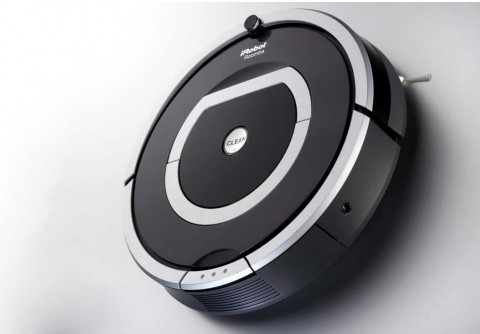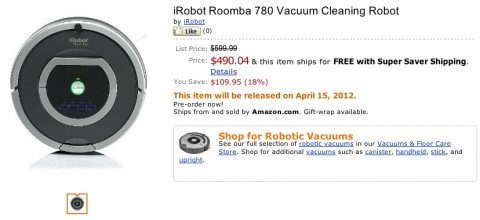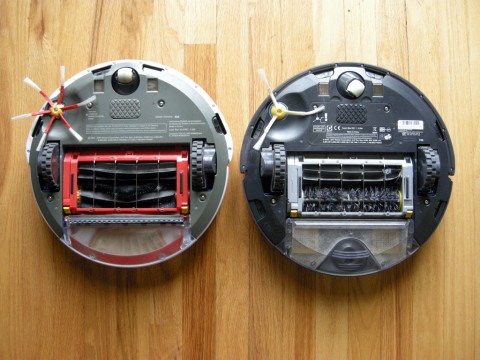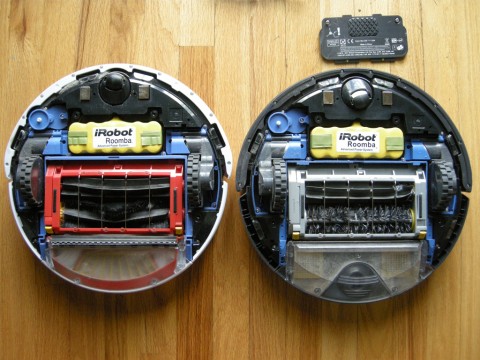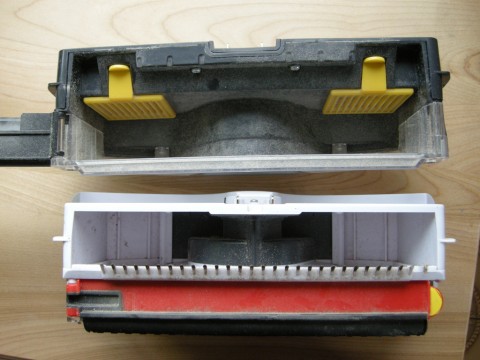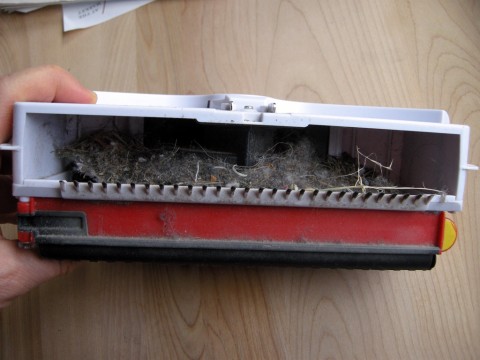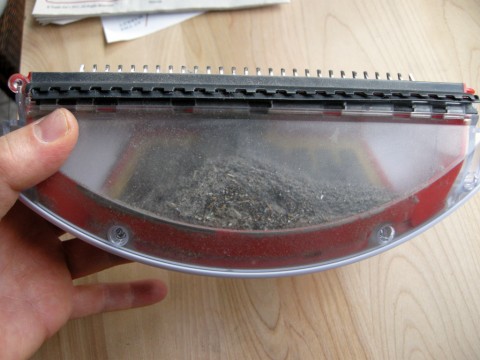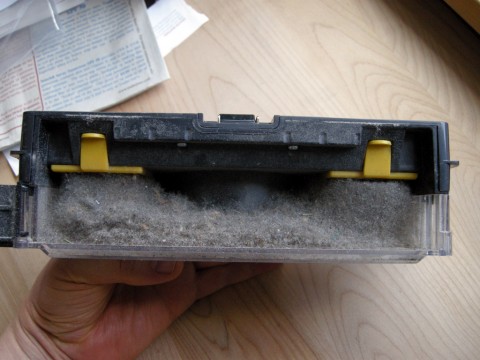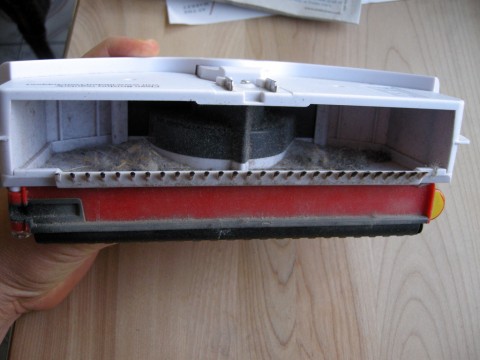What’s the first thing a person should do when they get their fancy, top of the line, iRobot Roomba 780in? Challenge it to a cage match verses a tough competitor, and then break down the differences between them. So in this article, we’re not only going to compare the Roomba 780 and the Mint Cleaner , we’re going see how they do in a cleaning smackdown. Two robots enter. One robot leaves!
, we’re going see how they do in a cleaning smackdown. Two robots enter. One robot leaves!
(Later note: Don’t miss our in-depth review of the Roomba 780 and also check out our 780 vs 500 Series Roomba robot vacuum cleaner comparison.)
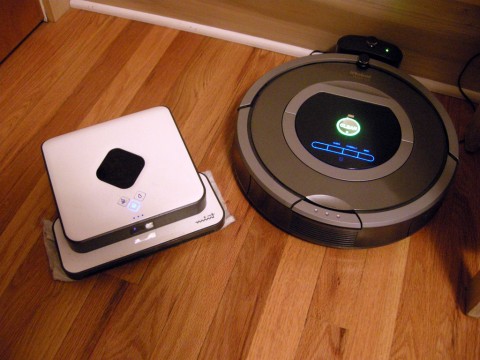
The challenge
Two rooms. Both with hardwood floors. One bedroom, one office, two robot floor cleaners. We were surprised by the results!
So comparing the Mint and the Roomba. Let’s talk about the really big differences first. Obviously, the Roomba vacuums and does carpets and all other floor surfaces, while the Mint sweeps and does not do carpets. Besides price (the Mint being $400 US cheaper), that’s probably the biggest difference. Also in the big difference department is navigation technology. The iRobot Roomba uses different behaviors in a meaningful but admittedly random way. The Mint actually maps the room it is cleaning and does so in a methodical way. As we will see later, this leads to meaningful differences in the amount of time each robot requires to finish a room. The Roomba can be scheduled, comes with virtual walls, and also comes with a dock that it can go back to when finished. The Mint doesn’t have any of that, but can be tucked away in a small space when not in use.
The Roomba 700 series robots come with remote controls so that you can steer them around, tell them to spot clean certain places, and also to go home to their dock. The Mint does not come with a remote. The Mint is whisper quiet, although it does make noise when it bumps into things. You could have a phone conversation in the same room, but you might end up having to explain what that funny noise was. “No. I didn’t drop anything. It’s my cleaning robot.” The Roomba 780, like all iRobots before it, is not something you would want to have a phone conversation in the same room with. In fact, you’ll probably want to make sure and use the scheduler so that you don’t have to be around when it is working. The mint is almost an inch shorter, and is smaller and thus can fit into tighter spaces.
Similarities: Both clean floors automatically. Both come with cliff-detection technology to keep them from falling down stairways. Both do a great job of cleaning. Both recharge. You can replace the batteries in both. The Roomba 780 vacuum and Mint cleaner also do their best to slow down before they run into things. Both have schemes for cleaning multiple rooms effectively (but one does it way better than the other).
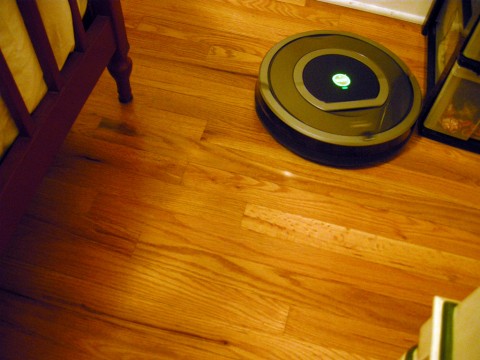
The Bedroom
Our 100 square foot bedroom, with a bed, two nightstands, two dressers, two outlet strips, and some miscellaneous cords – mostly for chargers, alarm clocks, and a nightstand lamp. The bed is high enough for both robots to clean under. Only the Mint can fit between the legs of the nightstands, although it doesn’t end up mattering much, because that’s also where all the power cables are. We ran the Roomba 780 first, and then had the Mint clean up after to see how good a job it did.
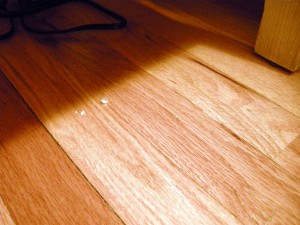 The Roomba took 28 minutes to clean the bedroom floor. It also required some prep work, moving cables out of the way. The 700 series Roombas are built to know when they’ve sucked up a cable, and actually reverse their brushes to spit them back out, which is cool. At the same time, I’ve had my 500 series Roomba suck up a cable and then drag a lamp off of a table, so I have some trust issues. The Roomba still ends up running over some cords, makes more noise, and can’t get under the night stands, so it leaves some fuzzies under one of the nightstands. Here is the bin after vacuuming the bedroom.
The Roomba took 28 minutes to clean the bedroom floor. It also required some prep work, moving cables out of the way. The 700 series Roombas are built to know when they’ve sucked up a cable, and actually reverse their brushes to spit them back out, which is cool. At the same time, I’ve had my 500 series Roomba suck up a cable and then drag a lamp off of a table, so I have some trust issues. The Roomba still ends up running over some cords, makes more noise, and can’t get under the night stands, so it leaves some fuzzies under one of the nightstands. Here is the bin after vacuuming the bedroom.
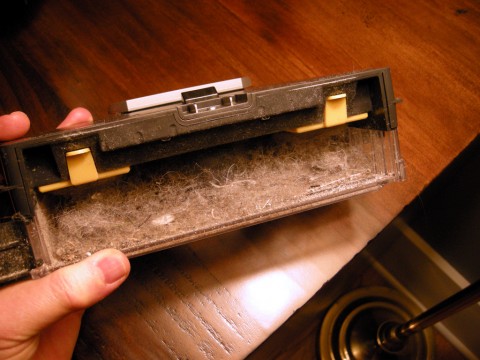
I do have to say, really quickly here because it doesn’t matter much in the comparison, that the new AeroVac Series 2 bin at least looks like an improvement over the previous technology. Here is what the Mint picked up with a Swiffer Pad after the Roomba.
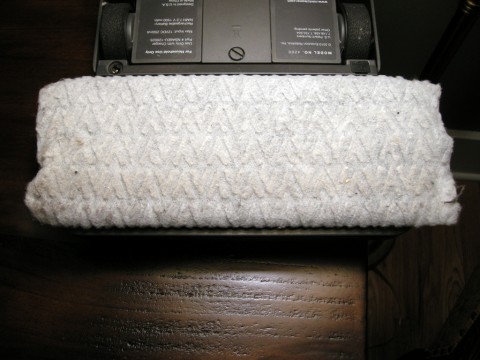
Really Impressive!!! If you click the picture to zoom in, you’ll see that there are some big particles, and two smallish dist bunnies that were left behind by the Roomba. Otherwise, it looks clean enough that we were both really amazed. Yes, here is the Mint cleaner pad after zipping around the same territory. The Mint did the bedroom in 17 minutes, which is 60% of the time. It was also really shocking, after the noise from the Roomba, to hear how quietly the Mint operates. Although I lack the technology to test it scientifically, I would have to say that between the two, the Roomba definitely plays rougher, moves furniture more while cleaning, and bumps into everything a little harder. However, I would say that the Roomba does do a better job of “seeing” furniture, and so the Mint tends to hit furniture at full speed more often than the Roomba. Because the Roomba climbs over cords, it did get some more of the space under the bed that was blocked to the Mint.
So did the Roomba 780 clean the floor thoroughly? We think so, and it passed the Mint white glove test pretty well.
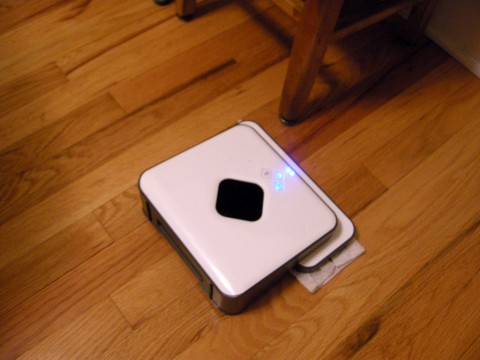
Second Run
A week later, we did the same room, but in the opposite order, to see how the Mint would do. Last time we ran the Roomba first, and then had the Mint test how iRobot device did. This time we sent the Mint cleaner to sweep up, and then had the Roomba see if there was anything left to pick up.
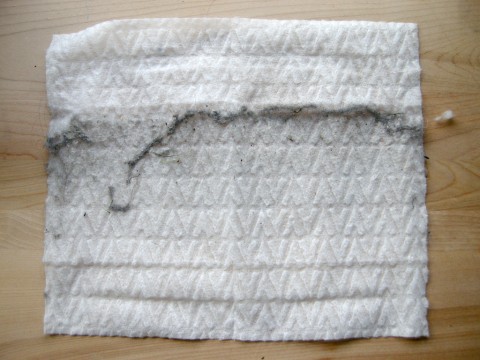
So here is what the Mint Swiffer pad looked like after the bedroom. This is what it usually looks like every time we use the Mint. There’s always a big rolled up line of dust bunny along the front edge, and then plenty of larger pieces of dirt and debris all over the pad. Also some hair.
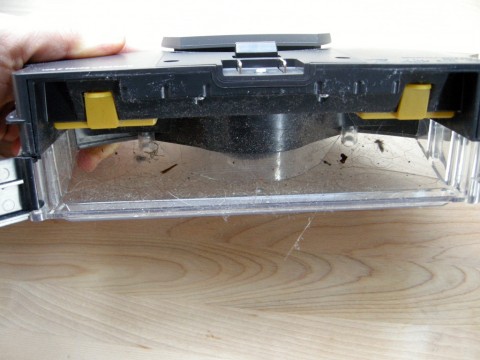
Here is the Roomba AeroVac bin after vacuuming the bedroom. This is almost as impressive as what happened the week before. After the amazing showing by the Roomba, we had expected the Mint to have similar success. I mean, they’re both cleaners. It’s cool that they both do a good job.
We tested another room and found similar results. Each of the robots did find a little bit more dirt and dust after the other had cleaned up, but not so much. In all of the rooms, the Mint was faster.
Home Base
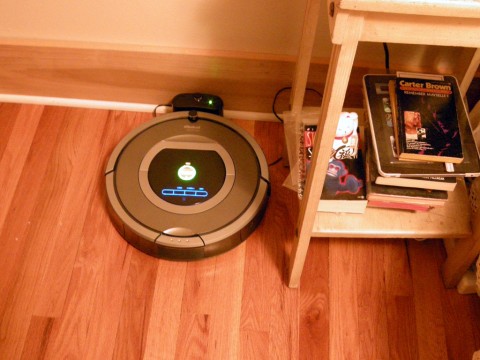
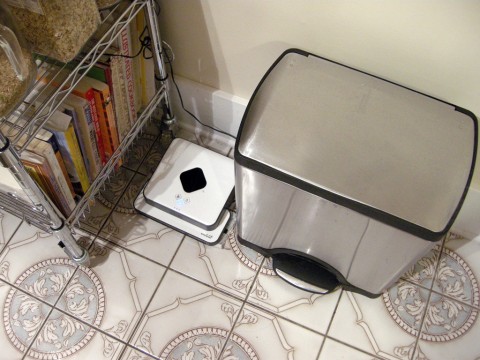
Prior to the Roomba 780 invasion, our home was occupied by an iRobot Roomba 500 series robot and a Mint Cleaner. While the Roomba would get the occasional assignment cleaning our living room, which has a large area rug, it mostly lived in the basement, which has wall-to-wall carpeting. The Mint lived upstairs in the kitchen, and basically found a home next to the trash can. Each floor of our house is only 800 square feet, so space is precious, and the Mint takes up very little. A Roomba and base takes up a little too much.
Multi-Room Cleaning
As mentioned above, both robots have schemes for cleaning multiple rooms. The Mint strategy is to use an extra Northstar module to keep the Mint from straying into the next room. It’s my view that this wasn’t designed very well by the engineers at Evolution Robotics. What happens is that you have to set up a Northstar navigation module in each room, and the second module only keeps the Mint from going into the next room. So you actually have to carry the robot into the next room and start it up again once it finishes the first one. Which is weird.
The Roombas have the much-vaunted “Lighthouse” technology, where the lighthouse acts like a gatekeeper and lets the Roomba into the second room when it has finished cleaning the first. The 780 ships with 2 of these Lighthouse virtual walls. The 770 and 760 ship with 2 virtual walls.
Summary
I don’t think we really have a clear winner here. Both robots are great at cleaning. Both have their respective strengths and weaknesses. Our informal testing indicates that the Roomba 780 cleaned up a little more thoroughly than the Mint. The Roomba is really the clear choice for people who have a lot of carpeting. Also, being able to schedule your robot to clean the house while you’re gone is really great. The Mint is significantly less expensive (even the cheapest model of the 700 Series, the Roomba 760, is more than twice as expensive). Also, the Mint requires less prep work to get a room ready to clean, and requires next to no maintenance. You just pick it up afterwards and change the pad. With the Roomba, you need to empty the bin, knock out the filters, and clean out the brushes. The eventually you have to change the filters.
Consumer robots are really here to save mankind from the drudgery of cleaning floors. Both robots are a welcome luxury, and we love using them! I would say that if you were trying to choose between the two, the three biggest things to consider would be the price of the robot, the amount of carpeting you have in your home, and the amount of prep work and maintenance you’re willing to put up with. For someone with hard wood floors throughout their house, our vote is still very much with the Mint Cleaner. (See our more in-depth review of the Mint, here.) For someone with carpeting and/or a real desire for high-tech features like scheduling, a self-charging dock, and a remote control, the iRobot Roomba 780 is pretty hard to beat.
Get the iRobot Roomba 780 Vacuum Cleaning Robot at Amazon
Mint User Reviews and More Information on Amazon
Later Note: There is also now a Mint Plus available at Amazon!
available at Amazon!
